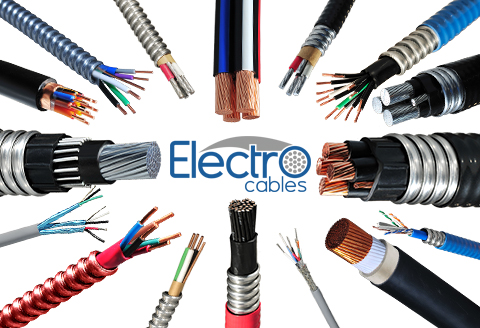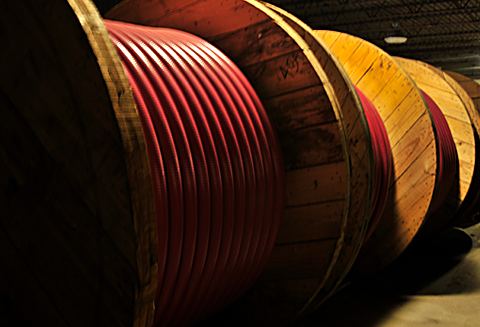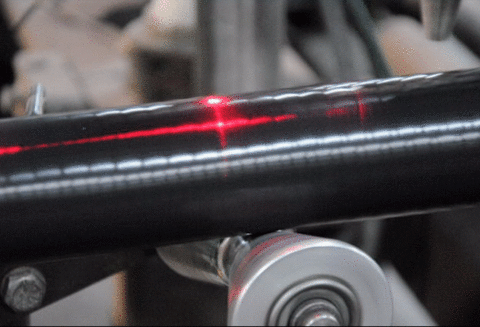A partner you can trust
Comprehensive Guide to Selecting the Best Flexible Cable Conduit for Your Project
In the ever-evolving landscape of electrical installation, the importance of choosing the right materials cannot be overstated, particularly when it comes to flexible cable conduit. As per recent industry reports, the global conduit market is projected to reach approximately $5.01 billion by 2025, with flexible cable conduit gaining significant traction due to its versatility and ease of installation. However, with a plethora of options available, selecting the most suitable type can be challenging.

Issues such as durability, temperature resistance, and adaptability to varying environmental conditions create complexities that must be addressed. Understanding these challenges is essential for project managers and engineers alike, as the right flexible cable conduit not only enhances the safety and efficiency of electrical systems but also directly impacts project timelines and costs.
This comprehensive guide aims to illuminate the critical factors involved in selecting the best flexible cable conduit for your specific project needs.
Understanding the Different Types of Flexible Cable Conduits Available in the Market
When choosing a flexible cable conduit for your project, it's essential to understand the different types available in the market. Flexible conduits are designed to protect electrical cables from environmental damage while providing ease of installation. Among the most common types are PVC, metal, and hybrid conduits. PVC conduits offer excellent resistance to chemicals and moisture, making them ideal for outdoor applications. They are lightweight, easy to install, and cost-effective, making them a popular choice for residential wiring.
On the other hand, metal conduits, often made from aluminum or galvanized steel, provide superior durability and enhanced protection against physical damage and electromagnetic interference. These conduits are suitable for industrial settings where exposure to harsh conditions is a concern. Some projects might benefit from hybrid conduits that combine the flexibility of plastic with the strength of metal. Understanding the unique properties of each type will enable you to select the best conduit that caters to your project’s specific requirements, ensuring safety and efficiency in cable management.
Comprehensive Guide to Selecting the Best Flexible Cable Conduit for Your Project
| Type of Flexible Cable Conduit | Material | Common Uses | Temperature Range (°C) | Flexibility |
|---|---|---|---|---|
| PVC Flexible Conduit | PVC | General wiring applications | -15 to 60 | Moderate |
| Steel Flexible Conduit | Steel | Heavy-duty applications, outdoor wiring | -20 to 90 | Low |
| Aluminum Flexible Conduit | Aluminum | Lightweight applications, corrosive environments | -40 to 80 | High |
| Liquid-Tight Flexible Conduit | PVC or Metal | Wet locations, outdoor applications | -20 to 60 | Moderate |
| Braided Flexible Conduit | Synthetic Fiber | Automotive and machinery wiring | -30 to 100 | Very High |
Key Factors to Consider When Choosing Flexible Cable Conduits for Your Project
When selecting a flexible cable conduit for your project, there are several key factors to consider to ensure you make the best choice. First, assess the environment where the conduit will be installed. If the conduit will be exposed to harsh conditions, such as extreme temperatures or moisture, opt for materials specifically designed to withstand such challenges, such as PVC or polyurethane. Additionally, consider the flexibility required for your application; some projects may need conduits that bend easily around corners, while others may require rigidity for specific installations.
Another important factor is the size and capacity of the conduit. Evaluate the number and size of cables you plan to run through the conduit and select a diameter that accommodates your needs without being overly bulky. It's also essential to check for compliance with local codes and regulations, as this can affect both safety and functionality. Lastly, consider the ease of installation and maintenance; some conduits come with features that simplify these processes, saving time and effort in the long run. By carefully weighing these factors, you can select the ideal flexible cable conduit tailored to your project's requirements.
Flexible Cable Conduit Selection Factors
Assessing Environmental Conditions: How They Influence Conduit Selection
When selecting the best flexible cable conduit for your project, one of the most critical factors to consider is the environmental conditions in which the conduit will be installed. Different environments present unique challenges, and understanding these can significantly influence your conduit choice. For instance, if the conduit will be exposed to extreme temperatures, selecting a material that can withstand both high and low temperatures is essential to ensure durability and performance. Flexible conduits made from specialized plastics or rubber compounds may offer the resilience needed for such conditions.
Moreover, the presence of moisture, chemicals, or potential physical impacts can further dictate your selection process. In environments where moisture is prevalent, opting for a conduit with a high degree of water resistance is crucial to prevent corrosion and degradation. Similarly, in industrial settings where chemicals are present, a conduit made from chemical-resistant materials can safeguard your wiring from damage.
Assessing these environmental conditions is not just about compliance; it also ensures the longevity and reliability of your electrical installations, ultimately contributing to the success of your project.
Sizing Your Flexible Cable Conduit: Essential Measurements and Guidelines
When selecting the best flexible cable conduit for your project, it is crucial to understand the essential measurements and guidelines for proper sizing. Recent reports indicate that the U.S. electrical conduit market was valued at approximately $1.72 billion in 2024 and is projected to grow at a compound annual growth rate (CAGR) of 4.17% through the forecast period. This growth highlights the increasing demand for secure and efficient conduit solutions in various applications.
When it comes to sizing your flexible cable conduit, adhering to the National Electrical Code (NEC) requirements is key. Specifically, for Type LFMC (Liquidtight Flexible Metal Conduit), the code stipulates that conduits must be securely fastened at appropriate intervals, and the number of conductors within the conduit determines the minimum conduit size. As the industry navigates evolving standards, understanding these measurements ensures compliance and enhances installation safety.
With the residential electrical conduit market projected to expand significantly by 2035, the importance of precise calculations and adherence to safety regulations cannot be overstated, making proper sizing an indispensable aspect of your project planning.
Cost vs. Durability: Finding the Right Balance in Your Conduit Choice
When selecting the best flexible cable conduit for your project, it’s essential to consider the balance between cost and durability. In many cases, project managers are faced with the dilemma of choosing a conduit that not only fits their budget but also stands the test of time. Investing in high-quality materials often results in long-term savings, as durable conduits can withstand environmental stresses and reduce the frequency of replacement. The specific application, whether for indoor use or exposed to the elements, plays a significant role in this decision-making process.
One important factor to consider is the type of environment where the conduit will be installed. For example, while cheaper options may be tempting, they could lead to increased costs down the line due to wear and tear. Assessing the anticipated load, potential exposure to chemicals, or physical impacts can guide you to a conduit material that offers sufficient strength without overshooting your budget.
By carefully weighing these aspects, you can achieve an ideal balance between cost and durability, ensuring your project's success and longevity.
Related Posts
-

Ultimate Guide to Choosing the Right Power Extension Cable for Your Needs
-

Top Strategies for Sourcing Shielded Power Cable in Global Markets
-

7 Reasons Why Shielded Power Cables Enhance Electrical Safety and Efficiency
-

8 Essential Tips for Choosing the Best Outdoor Electrical Cable for Your Next Project
-

The Future of Underground Cable Conduit: Innovations Shaping Tomorrow's Infrastructure
-

Exploring Innovative Power Extension Cable Options for Every Need

Products
Products
LEARN MORE
Current Inventory
Current Inventory
LEARN MORE
Custom Solutions
Custom Solutions
WE CAN HELPLighting Power & Control-Signal Cable
This content is restricted to site members. If you are an existing user, please log in. New users may register … LEARN MORE “Lighting Power & Control-Signal Cable”
LOOKING
FOR HELP?
We are here to help. You can contact us or create an account online to have access to special products, technical specifications and our new online quote tool.
ELECTRO CABLES
9 Riverside Drive
P.O. Box 276
Trenton, Ontario
CANADA K8V 5R5
N.A. Toll Free: 888-ELECTRO
(1-888-353-2876)
World: 613-394-4896
Fax: 613-394-4101
Email: sale@machinecables.com
We manufacture cables that are certified by the Canadian Standards Association (CSA), listed by Underwriters Laboratories and/or listed by Intertek (ETL).
Our quality management system is registered to ISO 9001: 2015. Our team is dedicated to consistently providing quality service and products to our customers.

© 2025 ELECTRO CABLES • SITE BY SNAP 360•
